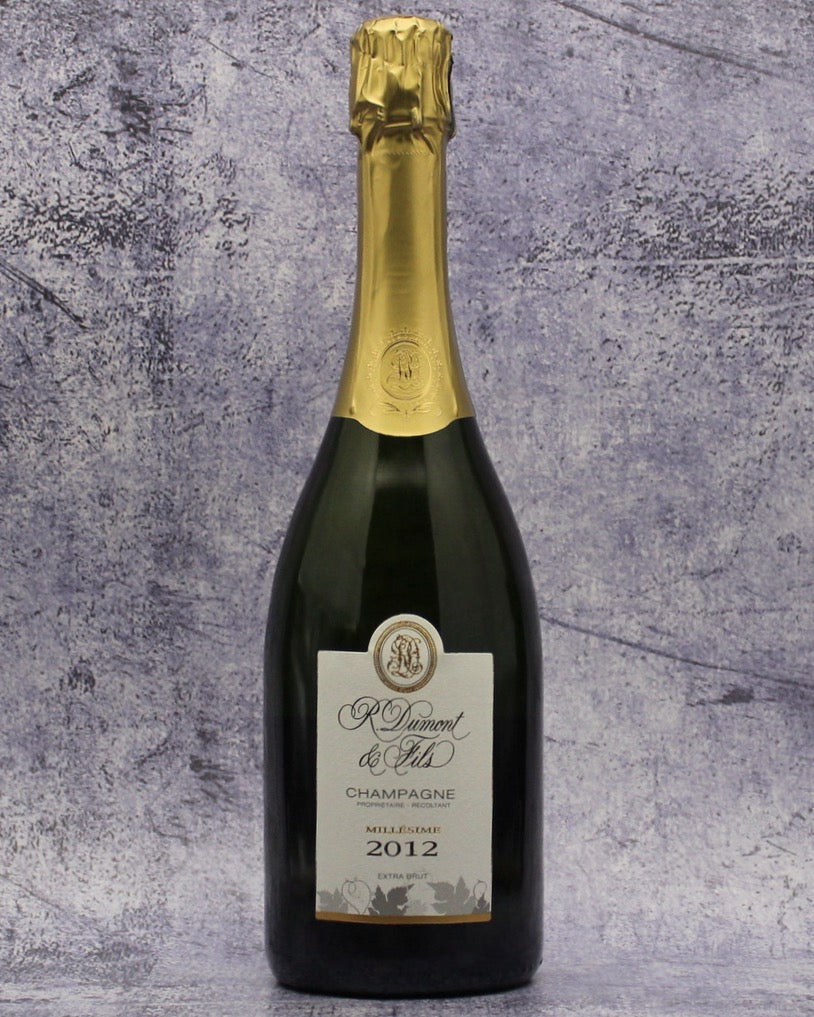From: Aube, Champagne, France
Blend: 70% Pinot Noir 30% Chardonnay
Taste: This gorgeous vintage champagne from R. Dumont is full of toasty and generous fruits wrapped in a blanket of zesty mousse. You’ll find notes of chamomile, citrus, white peach, praline, brioche, honey, and pastry cream with a hint of almond and an energetic mineral finish.
Pairing: While this champagne pairs well with fried chicken or seafood, I recommend pairing it with roasted chicken or Comté cheese. Some specific ideas in this vein include Slow-Roasted Oregano Chicken, Roasted Chicken in Fish-Sauce Butter, Rosemary-Garlic Roasted Chicken, Oven-Roasted Chicken Shawarma, One-Pot Whole Roasted Chicken and Rice (check out the recipe below!), and Roasted Chicken Thighs With Lemon, Thyme and Rosemary— you get the idea. If you’re not in the mood for roasted poultry, I’d recommend going with similar flavors to some of the suggestions above, and instead of poultry, do pasta!
One-Pot Whole Roasted Chicken and Rice
By Naz Deravian
About. Champagne Dumont is based in the village of Champignol-lez-Mondeville, in the southern Champagne region of the Aube, about 90 miles southeast of Reims and Epernay. The Dumont brothers have 23 hectares of vineyards in the Côte des Bar planted predominantly with Pinot Noir, but also with Chardonnay and other grape varieties. The Kimmeridgian chalky clay soils here are more similar to those in Chablis than the rest of Champagne. Bernard Dumont’s comments are insightful, “We grow grapes on the same soils as the vine growers in the Chablis region. There, they produce white wine from white grapes and here we produce white wine from red grapes.”
Champagne’s 2012 Growing Season: The 2012 growing season in Champagne, particularly for the R Dumont et Fils winery in the Aube region, was marked by a series of climatic challenges and triumphs that ultimately led to a memorable vintage. The season began with a harsh winter, followed by a spring that was unusually cold and rainy, posing a risk of frost and mildew which threatened the vineyards. However, the resilient vintners at R Dumont et Fils expertly navigated these difficulties. As summer arrived, the weather shifted dramatically, bringing with it an extended period of warm, dry conditions. This sudden change proved to be a boon, allowing the grapes to ripen perfectly. The resulting harvest was characterized by a lower yield, but the quality of the grapes was exceptional. The Chardonnay and Pinot Noir grapes from R Dumont et Fils, in particular, achieved an excellent balance of acidity and sugar levels, leading to wines with remarkable depth, complexity, and aging potential.
An article from Wine Spectator really highlights the struggle of winemaking in Champagne in 2012:
“Overall, 2012 is proving to be a very difficult year for Champagne growers. April brought frost—temperatures dropped well below zero, damaging vines in highly regarded vineyards in Avize, Chouilly and Cramant. Chardonnay in the Côte des Blancs and Grande Vallée de la Marne was particularly affected. Despite the damage, growers remained optimistic that there was still time for new buds to sprout.
But trouble struck again in May and early June, as extreme rain brought hailstorms, this time in Epernay and, more severely, in Aube, or the Côte des Bar. The timing was cruel—vines were just blooming and vineyard workers were starting canopy management, or pallissage. A severe storm began June 7, south of the Aube district in the village of Riceys. The storm than spread north and gained in intensity, as hail fell on the villages of Fontette, Saint-Usage, Arconville, Bergères, Couvignon, Fontaine, Meurville, Urville and Baroville. Overall, the hail damaged 2,700 acres of vines, most of which were Pinot Noir. The damage to particular parcels varied from between 10 percent to 100 percent, with some lots stripped bare of any green.”
Aube - historically significant Champagne: The Aube region in Champagne, over an hour southwest of Champagne's traditional heartland, is marked by its medieval centerpiece, the city of Troyes, and the vine-rich Côte des Bars area. Its viticultural heritage was once more extensive than the Valle du Marne region's, but it faced significant challenges, notably during the pivotal "Champagne Wars" of 1911. This period saw intense debate and conflict over the definition of the Champagne region. Aube, initially classified as producing “Champagne deuxième zone,” or "second-class Champagne," was controversially excluded from the Champagne appellation, causing upheaval among local growers. This exclusion was a source of contention until 1927, when Aube was finally recognized as an integral part of the Champagne region.
Despite these historical struggles, Aube has cultivated a unique wine identity. The region is predominantly filled with grower-producers, a trend that emerged about 15 to 20 years ago when local grape growers and new vintners began to bottle their own Champagnes. These producers emphasize a terroir-centric approach, often favoring single-variety, single-vintage, and single-vineyard Champagnes. This philosophy contrasts with the blending traditions prevalent in other parts of Champagne.
Aube's terroir, especially in the Côte des Bars, is distinct due to its proximity to Burgundy. It shares the Kimmeridgian soils rich in clay and limestone, akin to those in Chablis. This terroir particularly suits Pinot Noir, a defining aspect of the Aube Champagne profile. They range in style from rich and opulent to soft and elegant to rustic and textured, reflecting the unique characteristics of this historically rich yet once-contested region.

